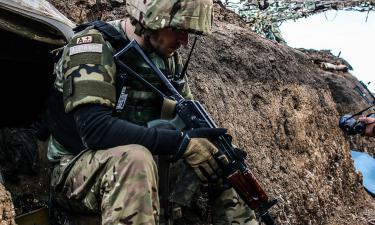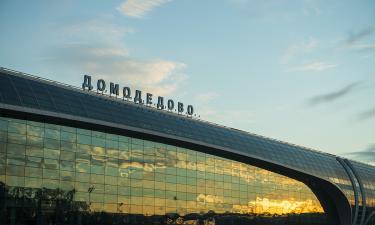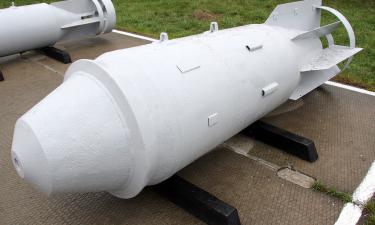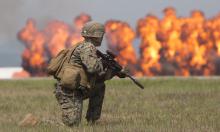“It is all over in the West. The East is of essence for today’s Rome”
The State Duma is to consider a draft address to President Putin on activity of the Roman Catholic church in the Russian Federation.
Today, the State Duma will consider a draft address to President Putin on the activity of the Roman Catholic church on the Russian Federation territory. The document was submitted by deputy Viktor Alksnis (the Russian Regions faction). He believes that the “activity of the Roman Catholic church poses a threat to the country’s integrity.”
The deputy is refering to the Vatican’s decision of February 11, according to which so-called apostolic administrations are to be transformed into standing dioceses. Now, Russia’s territory is called “a church province” in the documents of the Roman Catholic church.
According to the address, dioceses are to be banned (according to item #2 of the Federation Law article #14 of September 26, 1997 “About freedom of conscience and religious associations.”) President Putin is to “charge the Russian Ministry of Justice and its territorial departments with imposing a ban on the activity of the dioceses through the courts.”
It is to be stressed that the authors of the address do not suggest that the activity of the Roman Catholic church as such is to be prohibited in Russia. However, they believe that “the Roman Catholic church’s activity reveals that it is ignoring the thousand-year history of Christianity in Russia and treats the country as “a religious desert."
“Who were the Catholics of the Russian Empire?”
A program of the Radonezh Orthodox broadcasting station of April 16 was devoted to Vatican’s expansion and relations between the Catholic center with the Russian Orthodox Church. Senior Priest of the Moscow University Church of Tatiana the Martyr, Father Maxim (Kozlov), was invited to the studio.
The priest had analyzed the Roman Catholic church’s policy concerning Russia and said that the Vatican grounds its actions on the fact that Catholicism “is a historical religion in Russia.” It also thinks that the things that happened in the past (for example, in the XVIII – XIX centuries) are being implemented nowadays.
“Indeed, several millions of Catholics have been living on the historical area of the state within the XVIII, XIX, and even in the XVII centuries. However, who were these Catholics? They were people of the Polish Kingdom, Lithuania, and also some Germans living in the Volga region (Povolzhye). These people made up the dioceses. The tolerant Russian state allowed the implementation of their religious needs, including the organization of dioceses and other structures. Certainly, if the borders of the Russian state corresponded to the Russian Empire's borders before 1917 (or at least 1914), we could have spoken about those people from the point of view of a historical succession of the Catholic church’s structures. Is Poland currently Russia’s territory? Does it really make up one geopolitical union with Russia? Also, Lithuania is an independent state (it constantly stresses this fact itself). Do we have any Catholic groups of Germans in the Volga region now? There none in Kazakhstan, so they must have left for their Fatherland already.”
“Optimistic” quantity of Russian Catholics
Father Maxim is ironical about “the fantastic number of Russian Catholics” reported by Catholic sources. For example, several years ago, the media reported that the number of Catholics was 50-60 thousand people. However, today, Metropolitan Archbishop Tadeus Kondrusevic of Moscow says at the press-conferences or in press-releases, the number “is about 500,000 Catholics.” (Some Western media, with reference to Vatican or Russia’s Catholic structures certainly, report a number of about 1 million people. For example, Die Welt reported that the number of Russian Catholics make up 1,300 thousand people as of April 16).
Priest Maxim says that a tenfold increase within 5 to 7 years is impossible. In addition, where do these half-million Catholics live? If we take the number of Catholic congregations in Russia or sites for prayers (108 as reported by the Catholics themselves; however, the number may be overstated though) and divide the 500,000 Catholics into one hundred at least, we may see that each prayer site has five-thousand parishioners. Where can such parishes be situated here in Russia?
“It is perfectly clear that it is not the statistics of the actual number of Catholics, as the calculations are done the same way as Russian Muslims have recently done. The Mufti told Metropolitan Kirill in a televised conversation about the way Muslims calculated their number. He said that even people who did not belong to Muslims ethnically (Tatars, Bashkirs) were considered Muslims all the same. I suppose that the calculation used by Tadeus Kondrusevic is even more “optimistic”. Probably, the great number of Russia’s Catholics is made up even of those people who used to have Catholic background four of five generations ago.
“Is it a historical background?”
The priest refers to history and mentions the resolution of Moscow Metropolitan Philaret (Drozdov) of 1857 connected with the request of Moscow Catholics to open a sub-faculty of Catholic theology at the Moscow University. Philaret mentioned that “the number of Roman Catholics in all classes made up 578 males” at that time. Is this a historical background?
At the beginning of the 20th century, legal expert of the Polish Orthodox Church Pyotr Nikolayev published an opinion on the Russian Catholics about their number at theat time: “It is hard to count the number of Russian Catholics in this pre-war and pre-revolution epoch. One thing can be said for sure: the number of conscious Catholics in St.Petersburg made up some 200 people, not counting those who adopted Catholicism in other parts of the Empire, by marrying Catholics mostly.” Such is the background of Roman Catholicism.
Christianity has been “practically defeated” in the West today
Father Maxim wonders what the Roman Catholic church or Catholic missionaries may really bring to Russia. Statistics reveal that Catholicism does not enjoy popularity in Western Europe. The situation is not favorable indeed. Catholic Bishop of Westminster, Cardinal Marfeo Connor, the head of Britain’s Catholic Church said in 2000 that “Christianity is nearly defeated in Britain.” It should be mentioned that several comments of this kind about Catholicism’s influence on the British society had been announced even before the Bishop’s. According to official statistics, England’s Catholic Church lost 490,000 parishioners during 1989 – 1999. Is not this not a more suitable place to open Catholic dioceses?
Then comes the following:
“The number of Catholic pastors in France reduced by 12,000 people within 1990 – 2000. Only one of ten priests is under 40, at the same time every third of them is over 65. There are practically no new priests. The number of Catholic seminarists makes up 165 people in France. An average provincial Russian Orthodox seminary graduates more seminarists than in the whole of France.”
A similar situation can be observed in other Western European countries:
“The German Catholic Church is experiencing great problems. The number of Catholics reduced by 190,000 people in 1992. Every fifth Catholic gave up Sunday service over the period of 1990 - 1996. As for Austria, the eight million population consists of nominal Catholics mostly; over the year 2000, 43,632 people abandoned the Catholic church and only 3,387 joined it over the same period. It was Austria’s greatest withdrawal since 1959, the year when such statistics was started. Italy is the native land for Roman Catholicism. Nonetheless, the number of Italian clergymen decreased from 260,000 to 210,000 within the last 25 years. This is more than 2,000 priests per year! As far as I know, only 30 people are studying to become priests in Holland. It would be quite natural for Catholics to focus on this very country.” ”East is the essence of today’s Rome”
Example of the Russian Orthodox Church demonstrates quite a different situation: after a long period of persecutions, it is still eager to open new churches and cloisters, the number of parishioners is increasing, more young monks appear.
Pyotr Nikolayev, who has been already mentioned above, said about a century ago,“It is all over in the West. Catholicism faces a cold desert there. The East is the essence for today’s Rome. Rome expects to revive its power and might with the Russian soul, and, in the future, with the national strength of the Russian state. Under such awful conditions, Rome appeals for Russia’s salvation, for its own sake. This is the essence of Rome’s policy as concerning “the Russian problem.”
The Senior Priest of the Church of Tatiana the Martyr calls upon honest Catholics for “a thorough consideration of the problem.
Sergey Stefanov PRAVDA.Ru
Translated by Maria Gousseva
Read the original in Russian: http://www.pravda.ru/main/2002/04/17/39851.html
Subscribe to Pravda.Ru Telegram channel, Facebook, RSS!





